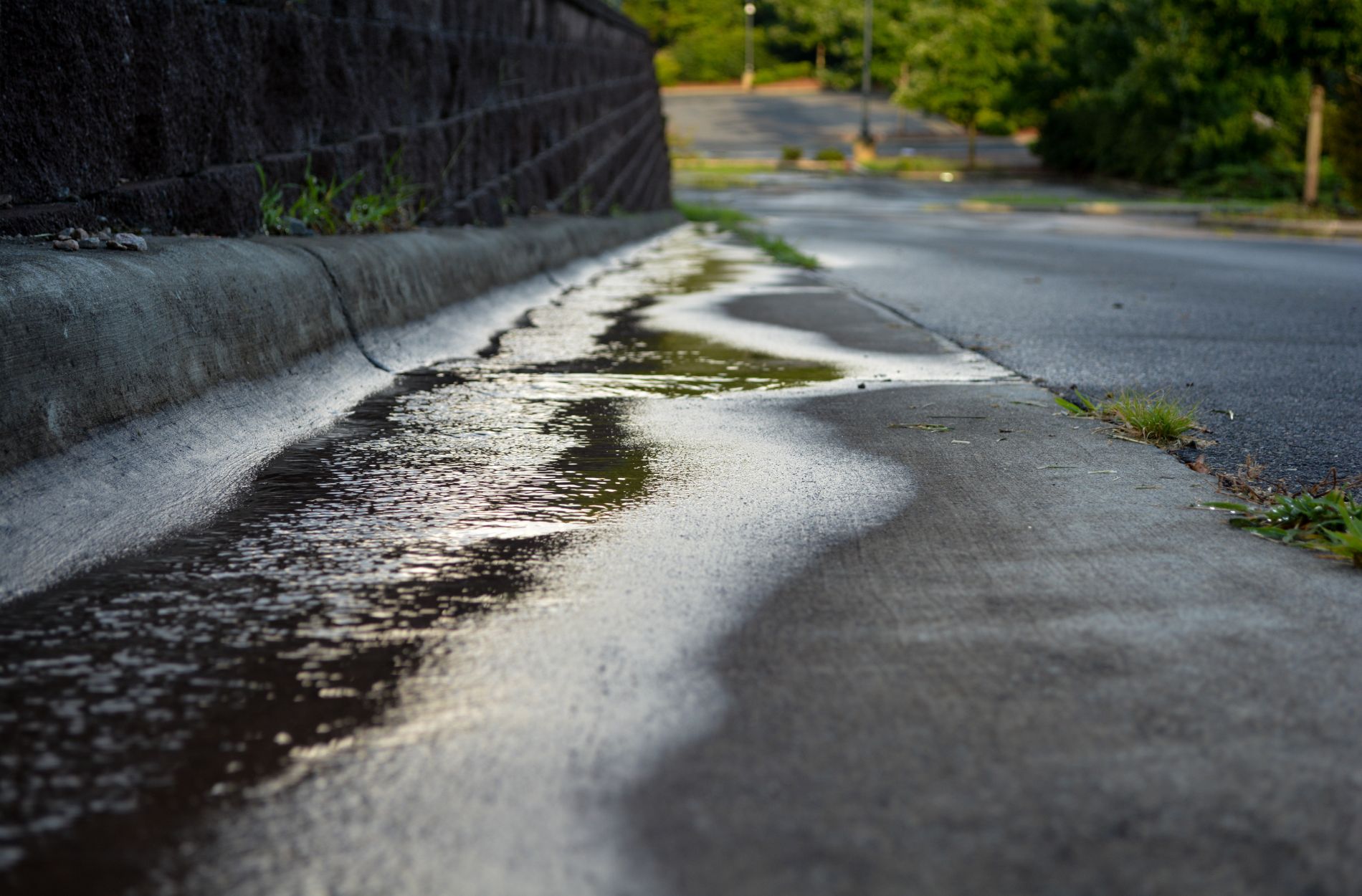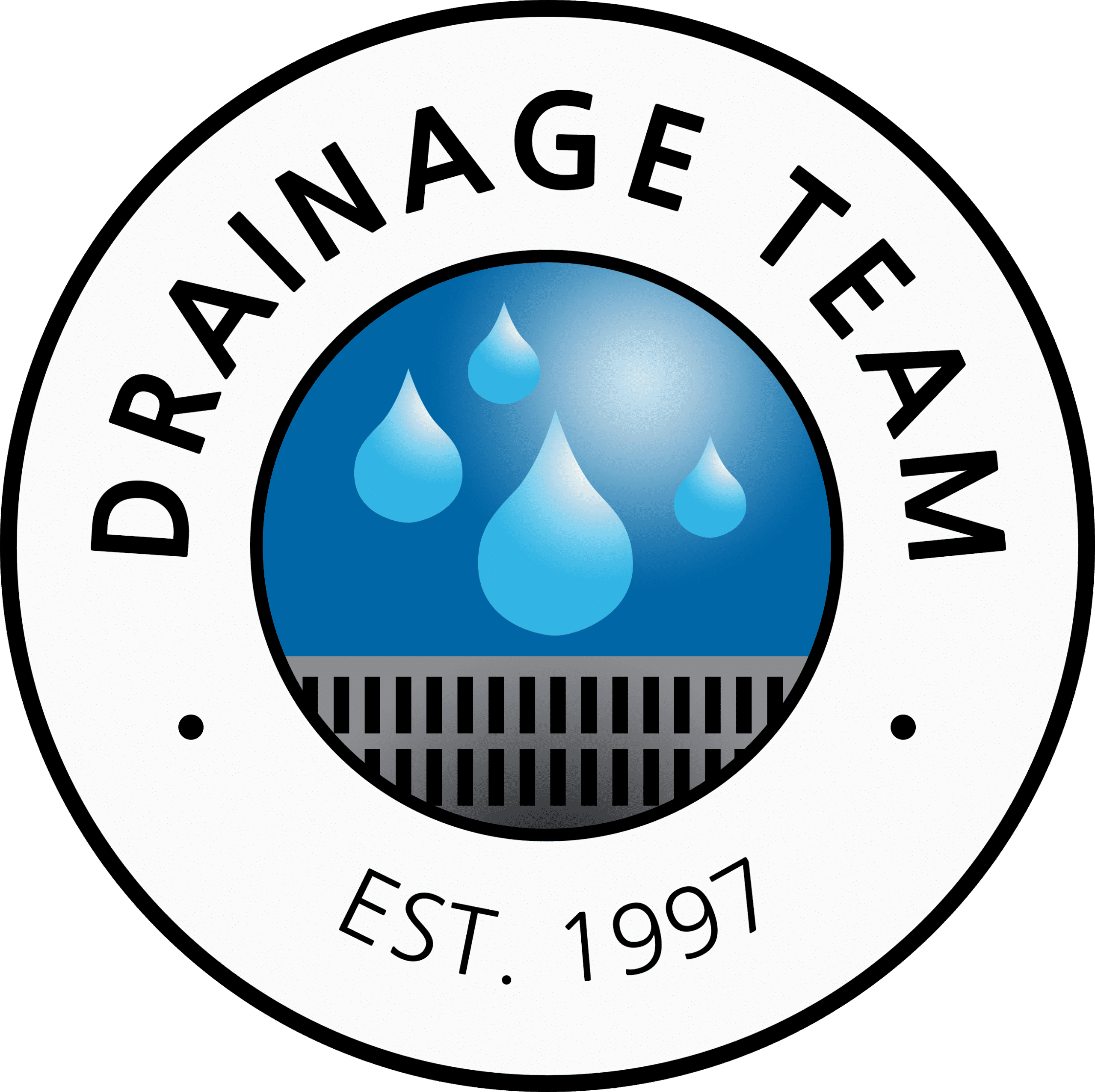As global climate change continues to bring increasingly frequent and severe storm events, effective stormwater management has become more critical than ever. Traditional methods, like stormwater basins and underground piping systems, have primarily utilized gray infrastructure to manage runoff. However, more property owners and developers are now looking to greener alternatives—known as green infrastructure—in a bid to create more sustainable and ecologically friendly stormwater management systems.
Green infrastructure uses natural processes to capture, absorb, and treat stormwater runoff. These solutions mimic the natural water cycle, allowing water to infiltrate the soil or be cleaned, stored, and reused more efficiently. Examples of green infrastructure systems include rain gardens, permeable pavements, green roofs, and bioswales.
Drainage Team specializes in drainage, erosion, stormwater basins, and waterproofing services for residential, commercial, and governmental properties. We understand the challenges property owners face in managing stormwater while considering environmental impacts and are committed to providing state-of-the-art green stormwater management solutions. In this blog post, we will explore the numerous benefits of green infrastructure for stormwater management and highlight practical applications of these eco-friendly systems.
Embracing green infrastructure for stormwater management helps property owners address issues of flooding, erosion, and pollution in an environmentally responsible way. By implementing these solutions, you can reduce the quantity and improve the quality of stormwater runoff while contributing to the overall health and well-being of the surrounding ecosystem. Many green infrastructure systems also come with the added benefit of beautifying landscapes and potentially increasing property values.
In this article, we will discuss the advantages of green infrastructure for stormwater management, delve into the different types of green infrastructure systems, and explore their practical applications. By understanding the possibilities of green infrastructure, property owners can make informed decisions on how best to create sustainable, eco-friendly stormwater management plans that protect their properties and contribute to a healthier environment.
1. The Environmental Advantages of Green Infrastructure
Green infrastructure offers numerous environmental benefits, positioning it as an eco-friendly and sustainable alternative to conventional gray infrastructure stormwater management systems. Some of the primary environmental advantages of green infrastructure include:
- Reduced surface runoff: By capturing and infiltrating stormwater, green infrastructure helps reduce the volume of surface runoff, contributing to decreased instances of flooding, erosion, and sediment transport.
- Enhanced water quality: Green infrastructure enables natural filtration and treatment of stormwater, removing pollutants before they reach nearby water bodies. This helps protect overall water quality and safeguards aquatic ecosystems.
- Conservation of natural ecosystems: By mimicking natural processes, green infrastructure supports and conserves local ecosystems, which leads to increased biodiversity and improved habitat quality for native plants and animals.
- Reduced urban heat island effect: Through the cooling effects of vegetation and increased shading, green infrastructure systems like green roofs can help combat the urban heat island effect, resulting in cooler microclimates within urban areas.
2. Types of Green Infrastructure Systems
There are numerous green infrastructure systems available, ranging from simple to complex designs and catering to a diverse array of property types and needs. Some of the most common green infrastructure options include:
- Rain gardens: These shallow, vegetated basins collect, absorb, and filter stormwater runoff from rooftops, driveways, and sidewalks. Rain gardens are designed to handle specific amounts of runoff and can be easily incorporated into landscaping plans for both residential and commercial properties.
- Permeable pavements: These paving systems are composed of porous materials which allow stormwater to infiltrate directly into the ground, reducing surface runoff and replenishing groundwater supplies. Permeable pavements can be used for parking lots, driveways, and walkways.
- Green roofs: Green roofs are vegetated rooftop systems that absorb and filter stormwater, reducing runoff and providing insulation and temperature regulation for the building itself. They can be installed on a variety of roof types and sizes, offering benefits such as energy savings, noise reduction, and aesthetic appeal.
- Bioswales: These are linear, vegetated channels designed to collect, convey, and treat stormwater runoff from surfaces such as streets and parking lots. Bioswales can help slow down water flow, reduce erosion, and filter pollutants from stormwater, making them ideal for use within urban environments.
3. Practical Applications of Green Infrastructure
Implementing green infrastructure for stormwater management can be achieved at various scales, from individual residential lots to community-wide initiatives. Some practical applications of green infrastructure systems include:
- Residential properties: Homeowners can design their gardens and landscaping with features like rain gardens and permeable pavements, which help manage stormwater runoff while enhancing the aesthetic appeal of their yards.
- Commercial developments: Developers of shopping centers, office buildings, and other commercial properties can incorporate green infrastructure elements such as bioswales, green roofs, or rain gardens to manage stormwater while creating visually appealing features that may increase property value.
- Public spaces and parks: Municipalities can incorporate green infrastructure systems like bioswales, permeable pavements, and rain gardens into public spaces, parks, and streetscapes, demonstrating an eco-friendly approach to stormwater management while providing additional amenities within urban areas.
- Transportation corridors: Green infrastructure systems can be integrated into transportation planning by incorporating bioswales and other vegetated features along highways, train lines, and other transit corridors. These features not only help manage stormwater runoff but can also provide noise and visual buffering.
4. The Role of Property Owners and Developers
Property owners and developers play a crucial role in advancing the implementation of green infrastructure systems for stormwater management. By incorporating these sustainable practices into their property designs and construction plans, they can contribute to the creation of more resilient and environmentally responsible communities. This can be achieved by:
- Collaborating with stormwater management professionals: Working with knowledgeable and experienced professionals can ensure the effective integration of green infrastructure systems into property designs while meeting regulatory requirements.
- Educating and engaging the community: Generating awareness and fostering a proactive approach to stormwater management within the community can help drive broader implementation of green infrastructure systems and encourage more sustainable practices.
- Pursuing financial incentives: Many municipalities and governmental agencies offer financial incentives, grants, or rebates for incorporating green infrastructure systems into property designs. Taking advantage of these programs can help offset costs and encourage the adoption of eco-friendly practices.
Conclusion
Green infrastructure presents a sustainable and environmentally friendly approach to stormwater management. By understanding the benefits, types, and applications of these systems, property owners and developers can make informed decisions on how to create effective stormwater management plans that contribute to healthier ecosystems and more resilient communities.
If you’re interested in exploring green infrastructure solutions for your property’s stormwater management needs, the Drainage Team is here to help. Our expertise in drainage, erosion, stormwater basins, and waterproofing services ensure comprehensive stormwater management solutions tailored to your specific needs. Contact us today to discuss your green infrastructure options and take the first step towards a more eco-friendly and sustainable stormwater management strategy.






